 W
WAarhus City Hall is the city hall of Aarhus, Denmark. The decision to build a new city hall was taken during a city hall meeting in 1937. The new building was inaugurated 2 June 1941, designed by architects Arne Jacobsen and Erik Møller. On the first proposal, the plans did not include a tower but due to massive public pressure it was later added to the drawings along with the idea to clad the structure in marble. Hans Wegner was in charge of the furnishing - which is uniquely designed to fit the building -, and parts of the interior design.
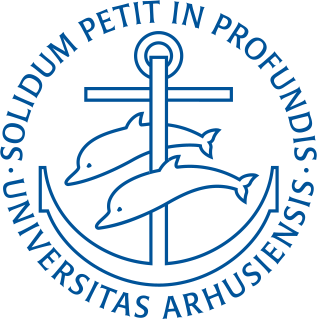 W
WAarhus University is a public research university located in Aarhus, Denmark. It is the largest and second oldest university in Denmark. The university belongs to the Coimbra Group, the Guild, and Utrecht Network of European universities and is a member of the European University Association.
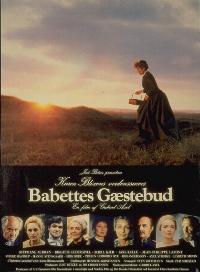 W
WBabette's Feast is a 1987 Danish drama film directed by Gabriel Axel. The film's screenplay was written by Axel based on the 1958 story by Isak Dinesen. Produced by Just Betzer, Bo Christensen, and Benni Korzen with funding from the Danish Film Institute, Babette's Feast was the first Danish cinema film of a Blixen story. It was also the first Danish film to win the Oscar for Best Foreign Language Film. The film premiered in the Un Certain Regard section of the 1987 Cannes Film Festival.
 W
WBenny's Bathtub is a 1971 Danish animated film directed by Jannik Hastrup and Flemming Quist Møller. The film relates the story of a boy who flees the boring world of adults into a magical land in the bottom of his bathtub. The film featured the voices and songs of Peter Belli, Otto Brandenburg and Povl Dissing as well as the jazz music of Kenny Drew and Niels-Henning Ørsted Pedersen. Benny's Bathtub received a special Bodil Award for animated film in 1971 and is one of the ten films chosen for Denmark's cultural canon by the Danish Ministry of Culture.
 W
WBrumleby is an enclave of terraced houses in Copenhagen, Denmark, located between Øster Allé and Østerbrogade, just south of Parken Stadium and St. James' Church. Built for indigent workers by the Danish Medical Association from 1854 to 1872, it is one of the earliest examples of social housing in Denmark and became a model for later projects.
 W
WThe Champagne Galop is a piece of orchestral music by the Danish composer Hans Christian Lumbye (1810–1874) which was written to celebrate the second anniversary of Copenhagen's Tivoli in 1845. Together with Lumbye's Telegraph Galop and Copenhagen Steam Railway Galop, it was included in the 2006 Danish Culture Canon as a masterpiece of Danish classical music.
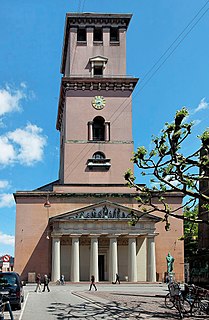 W
WThe Church of Our Lady is the cathedral of Copenhagen. It is situated on Frue Plads public square in central Copenhagen, next to the historic main building of the University of Copenhagen.
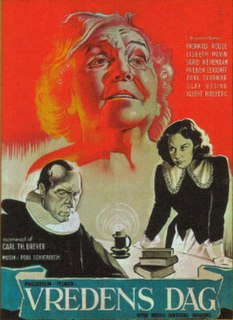 W
WDay of Wrath is a 1943 Danish drama film directed by Carl Theodor Dreyer and starring Lisbeth Movin, Thorkild Roose and Preben Lerdorff Rye. It is an adaptation of the 1909 Norwegian play Anne Pedersdotter by Hans Wiers-Jenssen, based on a 16th century Norwegian case. The film tells the story of a young woman who is forced into a marriage with an elderly pastor after her late mother was accused of witchcraft. She falls in love with the pastor's son and also comes under suspicion of witchcraft.
 W
WDitte, Child of Man,, is a 1946 socio-realistic Danish drama directed by Bjarne Henning-Jensen based on the novel by Martin Andersen Nexø. The film stars Tove Maës in the tragic story of an impoverished young girl who becomes the victim of harsh social conditions. The film has been noted as the first example of the more realistic and serious Danish film in the post-World War II era. Ditte, Child of Man is one of the ten films listed in Denmark's cultural canon by the Danish Ministry of Culture.
 W
WEfterårsmorgen ved Sortedamssøen is an oil painting by Christen Købke, one of the leading artists in the Golden Age of Danish Painting. Included in the 2006 Danish Culture Canon, the painting hangs in Copenhagen's Ny Carlsberg Glyptotek.
 W
WElverskud is a ballad for soloist, choir and orchestra by Niels W. Gade from 1854.
 W
WAn equestrian statue of King Frederick V of Denmark stands in the center of Amalienborg Square, Copenhagen, framed by the four symmetrical wings of the Amalienborg palace. The statue portrays the king in classic attire, crowned with laurels and with his hand outstretched, holding a baton. Commissioned by the Danish East India Company, it was designed in Neoclassical style by Jacques Saly in 1768 and was cast in bronze in 1771. The apparent dignity and tranquility in the depiction of the king is typical of Danish representations of monarchs. It is considered to be one of the notable equestrian monuments of its time.
 W
WThe Fall of the King is a novel by Danish author Johannes V. Jensen, published in three parts from 1900 to 1901. It tells the story of Mikkel Thøgersen and the social entanglements which bring him into the service of king Christian II of Denmark.
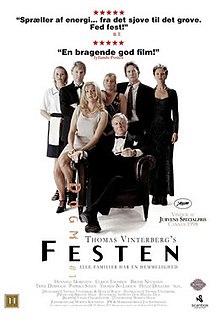 W
WFesten is a 1998 Danish drama film directed by Thomas Vinterberg and produced by Nimbus Film.
 W
WThe Finger Plan is an urban plan from 1947 which provides a strategy for the development of the Copenhagen metropolitan area, Denmark. According to the plan, Copenhagen is to develop along five 'fingers', centred on S-train commuter rail lines, which extend from the 'palm', that is the dense urban fabric of central Copenhagen. In between the fingers, green "wedges" are intended to provide land for agriculture and recreational purposes.
 W
WFlora Danica is a comprehensive atlas of botany from the Age of Enlightenment, containing folio-sized pictures of all the wild plants native to Denmark, in the period from 1761 to 1883.
 W
WFrederiksstaden is a district in Copenhagen, Denmark. Constructed during the reign of Frederick V in the second half of the 18th century, it is considered to be one of the most important rococo complexes in Europe and was included in the 2006 Danish Culture Canon.
 W
WGlorup is a manor house located between Nyborg and Svendborg in the south-east of the Danish island Funen. Rebuilt to the design of Nicolas-Henri Jardin and his pupil Christian Josef Zuber in 1763–65, it is considered one of the finest Baroque complexes in Denmark and was included in the 2006 Danish Culture Canon.
 W
W"The Golden Helmet" is a 32-page Disney comics adventure story written, drawn, and lettered by Carl Barks. The story was first published in Four Color #408 with a cover by Barks. In the story, Donald Duck and his nephews hunt for a Viking helmet that gives the possessor legal claim to North America.
 W
WThe Great Belt Fixed Link is a multi-element fixed link crossing the Great Belt strait between the Danish islands of Zealand and Funen. It consists of a road suspension bridge and a railway tunnel between Zealand and the small island Sprogø in the middle of the Great Belt, and a box-girder bridge for both road and rail traffic between Sprogø and Funen. The total length is 18 kilometres (11 mi).
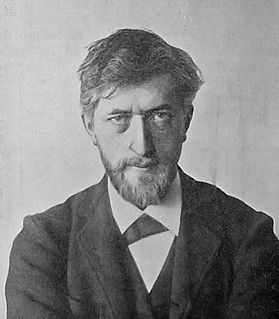 W
WThe Great Relief is a sculpture by the Danish artist J.F. Willumsen completed in 1928. Consisting mainly of marble and gilt bronze, it was included in the 2006 Danish Culture Canon as a masterpiece of Danish culture.
 W
WHover Church is located approximately 2 kilometres (1.2 mi) west of the village of Hover in Ringkøbing-Skjern Municipality, Denmark. Built in twelfth century, it is one of Denmark's oldest stone churches. Not much has changed in its shape and appearance over the past 800 years, making it a good example of old Danish architecture. Hover Church is included within the Danish Culture Canon in the Architecture category.
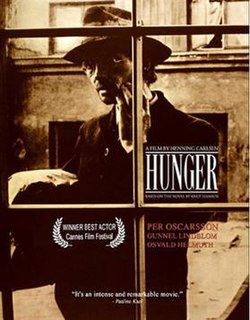 W
WHunger is a 1966 black-and-white drama film directed by Denmark's Henning Carlsen, starring Swedish actor Per Oscarsson, and based upon the novel Hunger by Norwegian Nobel Prize-winning author Knut Hamsun. Filmed on location in Oslo, it was the first film produced as a cooperative effort among the three Scandinavian countries.
 W
WThe Idiots is a 1998 Danish comedy-drama film written and directed by Lars von Trier. It is his first film made in compliance with the Dogme 95 Manifesto, and is also known as Dogme #2. It is the second film in von Trier's Golden Heart Trilogy, preceded by Breaking the Waves (1996) and succeeded by Dancer in the Dark (2000). It is among the first films to be shot entirely with digital cameras.
 W
WDyrehaven, officially Jægersborg Dyrehave, is a forest park north of Copenhagen. It covers around 11 km2 (4.2 sq mi). Dyrehaven is noted for its mixture of huge, ancient oak trees and large populations of red and fallow deer. In July 2015, it was one of the three forests included in the UNESCO World Heritage Site inscribed as Par force hunting landscape in North Zealand.
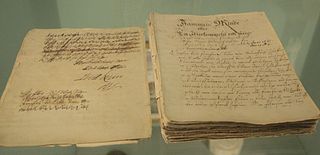 W
WJammers Minde, translated into English as Memoirs of Leonora Christina, is an autobiography completed in 1674 by Leonora Christina, daughter of Christian IV of Denmark and Kirsten Munk. The work, first published in 1869, is included in the Danish Culture Canon. It is considered to be the finest piece of prose work written in 17th-century Denmark. It relates a partly fictionalized account of Christina's time during captivity, with a detailed personal account of prison life, often drawing upon biblical references and black humour, and contrasting the comical with the macabre. Radical for its period in its personal account, it is considered an existential religious writing.
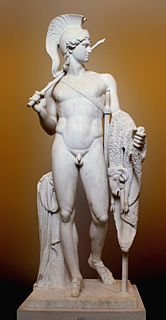 W
WJason with the Golden Fleece is a sculpture by Bertel Thorvaldsen. A lifesize clay version created in 1803 is considered to be the artist's first great work. The larger marble statue, reaching a height of 242 cm (95 in), was however not completed until 1828.
 W
WJenny and the Soldier is a 1947 Danish dramatic film written and directed by Johan Jacobsen. The black-and-white film is based on the 1940 stage play Brudstykker af et mønster written by Danish playwright Carl Erik Soya. The gritty romantic drama received critical praise for its authentic portrayal of everyday life. Jacobsen received the first Bodil Award for Best Danish Film, while both Poul Reichhardt and Bodil Kjer were awarded Bodils for their leading roles. Jenny and the Soldier is one of the ten films listed in Denmark's cultural canon by the Danish Ministry of Culture.
 W
WJeppe on the Hill; Or, The Transformed Peasant is a Danish comedy by the Norwegian playwright Ludvig Holberg, written during the time of the Dano-Norwegian dual monarchy. The play premiered at the Lille Grønnegade Theatre in 1722, and was first published in print in 1723. The play has a special status in Danish theater, and playing the lead role, Jeppe, is seen as a great distinction. Because this, it was entered into the Danish Culture Canon in 2006. Despite its fame in Denmark, it is not well known in the English-speaking world.
 W
WLego is a line of plastic construction toys that are manufactured by The Lego Group, a privately held company based in Billund, Denmark. As of 2021, Lego was the largest toy company in the world. The company's flagship product, Lego, consists of variously coloured interlocking plastic bricks accompanying an array of gears, figurines called minifigures, and various other parts. Lego pieces can be assembled and connected in many ways to construct objects, including vehicles, buildings, and working robots. Anything constructed can be taken apart again, and the pieces reused to make new things.
 W
W"The Little Mermaid" is a Danish literary fairy tale written by the Danish author Hans Christian Andersen. The story follows the journey of a young mermaid who is willing to give up her life in the sea as a mermaid to gain a human soul. The tale was first published in 1837 as part of a collection of fairy tales for children. The original story has been a subject of multiple analyses by scholars such as Jacob Bøggild and Pernille Heegaard as well as the folklorist Maria Tatar. These analyses cover various aspects of the story from interpreting the themes to discussing why Andersen chose to write a tragic story with a happy ending. It has been adapted to various media, including musical theatre, anime, ballet, opera, and film. There is also a statue portraying the mermaid in Copenhagen, Denmark, where the story was written and first published.
 W
WLive sådan is a live album by Gasolin', released in June 1976 as a double LP album. It was recorded during their winter tour of Denmark in January 1976.
 W
WMariebjerg Cemetery is located in Gentofte north of Copenhagen, Denmark. It was laid out between 1926 and 1933 to the design of the landscape architect Gudmund Nyeland Brandt and is considered an important example of European Modernist landscape architecture. Its design has inspired many other cemeteries both in Denmark and abroad.
 W
WMaskarade (Masquerade) is an opera in three acts by Carl Nielsen to a Danish libretto by Vilhelm Andersen, based on the comedy by Ludvig Holberg. It was first performed on 11 November 1906 at Royal Danish Theatre, Copenhagen. Maskarade has enjoyed enduring popularity in Denmark where it is considered to be the country's national opera.
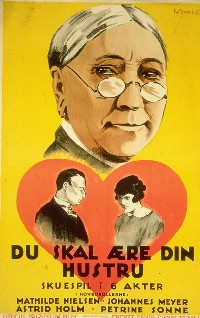 W
WMaster of the House is a 1925 Danish silent drama film directed and written by acclaimed filmmaker Carl Theodor Dreyer. The film marked the debut of Karin Nellemose, and is regarded by many as a classic of Danish cinema.
 W
WMatador is a Danish TV series produced and shown between 1978 and 1982. It is set in the fictional Danish town of Korsbæk between 1929 and 1947. It follows the lives of a range of characters from across the social spectrum, focusing specifically on the rivalry between the families of two businessmen: banker Hans Christian Varnæs, an established local worthy, and Mads (Andersen-)Skjern, who arrives in town as a travelling salesman as the series opens, and builds up a large business. The name Matador was taken from the localised edition of the boardgame Monopoly, also the series' tentative English title. In addition, in contemporary Danish a "matador" is often used to describe a business tycoon, in the series referring to the character of Mads Skjern and his craftiness as a self-made entrepreneur.
 W
WThe Panton Chair is an S-shaped plastic chair created by the Danish designer Verner Panton in the 1960s. The world's first moulded plastic chair, it is considered to be one of the masterpieces of Danish design. The chair was included in the 2006 Danish Culture Canon.
 W
WPelle the Conqueror is a 1987 epic film co-written and directed by Bille August, based upon the 1910 novel of the same name by Danish writer Martin Andersen Nexø. The film tells the story of two Swedish immigrants to Denmark, a father and son, who try to build a new life for themselves. It stars Pelle Hvenegaard as the young Pelle, with Max von Sydow as his father, and also features Axel Strøbye and Astrid Villaume.
 W
WThe PH-lamp is a term for light fixtures designed by Danish designer and writer Poul Henningsen. The term is sometimes used to refer to any lamp designed by Henningsen or specially Henningsen's three-shade lamp series. The lamps are produced by Louis Poulsen.
 W
WThe Skuldelev ships are five original Viking ships recovered from the waterway of Peberrenden at Skuldelev, c. 20 km (12 mi) north of Roskilde in Denmark. In 1962, the remains of the submerged ships were excavated in the course of four months. The recovered pieces constitute five types of Viking ships and have all been dated to the 11th century. They were allegedly sunk to prevent attacks from the sea. When the remains were unearthed, they were thought to comprise six ships, but "Skuldelev 2" and "Skuldelev 4" were later discovered to be parts of one ship.
 W
WSommerdag ved Roskilde Fjord is an oil painting by the Danish artist L. A. Ring from 1900. Considered to be one of the masterpieces of Danish culture, it was included in the 2006 Danish Culture Canon. It is displayed in the Randers Museum of Art.
 W
WStøvkornenes dans i solstrålerne, also Solstråler (Sunbeams), is an oil painting from 1900 by the Danish Symbolist painter Vilhelm Hammershøi. Considered to be one of the masterpieces of Danish culture, it was included in the 2006 Danish Culture Canon.
 W
WTree of Knowledge is a 1981 Danish coming-of-age drama directed by Nils Malmros. The film details the lives of 17 teenage schoolmates in 1950s Denmark. Shooting on location at the high school which he had attended, Malmros took two years to film the action, so the cast members reflected the real-life physical and emotional development of their characters.
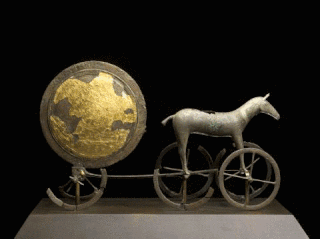 W
WThe Trundholm sun chariot, is a Nordic Bronze Age artifact discovered in Denmark. It is a representation of the sun chariot, a bronze statue of a horse and a large bronze disk, which are placed on a device with spoked wheels.
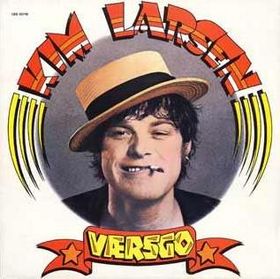 W
WVærsgo is the debut album of Kim Larsen who formed Gasolin' in 1969 with Wili Jønsson and Franz Beckerlee. It was released in 1973 while he was still a member of Gasolin', and the album contains songs which were not found suitable for Gasolin'. With 17 songs, it was apparent that Kim Larsen had a lot of songs to offer. It is also apparent why these songs did not fit into the Gasolin' frame. Unlike the hard and disciplined rock of Gasolin' the songs on Værsgo have a loose and cosy atmosphere with a lot of romance and sentimentality and childlike innocence. The album became a big surprise hit and it is considered to be a classic in Danish popular music. In 2005 the 17 songs were re-recorded by various Danish artists under the title: Værsgo 2. This album became a big seller too, confirming the iconic status of Værsgo. Værsgo was recorded in Wifoss studio in Copenhagen and produced by Poul Bruun. All the members of Gasolin' played on the album: Franz Beckerlee played the Moog, Wili Jønsson played the piano and organ and Søren Berlev played the percussion.
 W
WVed Vejen is a short novel written by the Danish author Herman Bang in 1886. It was originally published in Copenhagen by Det Schubotheske Forlag as part of a collection of four stories entitled Stille Eksistenser, centering on women who are subdued or living in isolation. It was first published independently in 1898. An impressionist novel, it relates the story of Katinka, a sensitive but ambitious young woman married to a boisterous and somewhat vulgar station master, Bai.
 W
WVestegnen is a term for a part of the former Copenhagen County, located west of Copenhagen. The area is defined as consisting of the municipalities of Hvidovre, Glostrup, Brøndby, Albertslund, Vallensbæk, Ishøj and Høje-Taastrup and covers the area around some of the stations of the S-train, which are on the lines towards Høje Taastrup and Køge, and which are within the former Copenhagen County. The urban area of Hundige is often included due to its proximity to the rest of “Vestegnen” and the former terminus on the Køge Bugt-banen, but Hundige is located in Greve Municipality and thus neither in the former Copenhagen County nor the current Capital Region of Denmark.